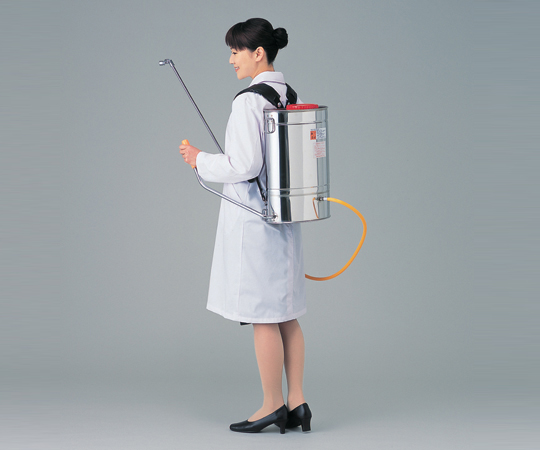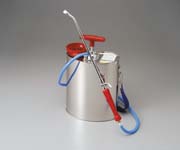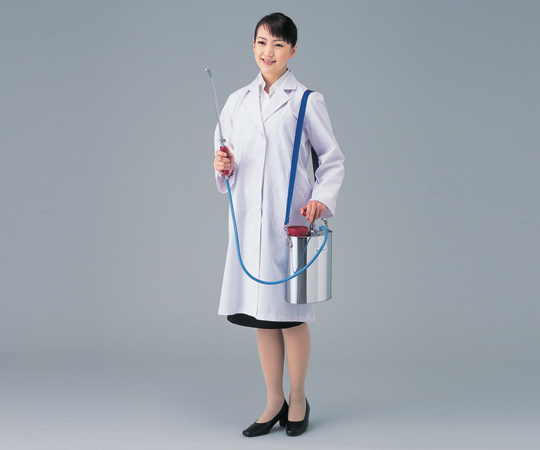
KONICA MINOLTA SPAD-502 Plus Chlorophyll Meter (2 x 3mm, -9,9 to + 199,9SPAD)
| Manufaturer: | KONICA MINOLTA |
| Model: | SPAD-502 Plus |
*The above price is Standard Price, Kindly click on Request a quote ![]() to unlock the Best Price and Delivery Date - Check Availability. Our expert consulting team is always ready to assist you.
to unlock the Best Price and Delivery Date - Check Availability. Our expert consulting team is always ready to assist you.
*Order Process: 1. Request a quote ⇒ 2. Quote via Email ⇒ 3. Proforma Invoice ⇒ 4. Payment ⇒ 5. Delivery and Invoice.
*We deliver to your doorstep under DAP terms. Customs clearance is for your account.

*You can't find the product you need, please send us the picture/specifications/model/product code and quantity you need to email: [email protected]. We will find it for you.
*Review us here: Review Now
Description
- Compact and lightweight for easy portability.
- Leaves (sample) can be measured only by holding with measuring head and closing.
- Possible to check measured data and judgment of outliers at one glance.
- Measurement target: Leaf of agricultural product (mainly paddy rice)
- Measuring method: 2 wavelength optical density difference method
- Measurement area: 2 x 3mm
- Measurement accuracy: within ±1.0SPAD
- Memory: 30 data
- Warning buzzer, with arbitrary correction function
- Waterproof structure: IPX4
- Power supply: AA alkaline dry cell x 2 pieces (included)
- Weight: 200g
- Model number: SPAD-502 Plus
- Display range: -9.9 to +199.9SPAD
- Size (mm): 78 x 49 x 164
- Accessories: Stopper, Reading checker, Strap, Soft case
-
Frequently Asked Questions about the KONICA MINOLTA SPAD-502Plus Chlorophyll Meter:
1/ What is the SPAD-502Plus Chlorophyll Meter?
The SPAD-502Plus is a handheld, non-destructive meter for measuring the relative chlorophyll content of crop leaves in the field, helping optimize fertilizer use and monitor plant health.
2/ Which crops can be measured?
It’s widely used on wheat, rice, corn, cotton and many other agricultural and horticultural plants to assess nitrogen status and overall vigor.
3/ How does the SPAD-502Plus determine chlorophyll content?
It measures optical density at two wavelengths - red (600 - 700nm) and near-infrared (~950 nm) - and calculates a SPAD value proportional to leaf chlorophyll.
4/ What is the measurement range and area?
The display range is -9.9 to 199.9 SPAD units, with a 2 x 3mm measurement aperture and a maximum leaf thickness of 1.2mm.
5/ What level of accuracy and repeatability does it offer?
Accuracy is +/-1.0 SPAD (0 - 50 SPAD), repeatability +/-0.3 SPAD (0 - 50 SPAD), and reproducibility +/-0.5 SPAD, ensuring reliable readings across multiple measurements.
6/ What light source and sensor does it use?
It employs two LED light sources and a silicon photodiode receptor to capture transmitted light intensity.
7/ What display and memory functions are available?
An LCD shows a four-digit SPAD value (to one decimal place), the number of measurements, and a trend graph of stored data. Memory holds up to 30 readings and can calculate their average automatically.
8/ What are its physical characteristics?
The meter is compact and lightweight for portability. It meets water-resistance rating IPX-4, allowing use in light rain (not immersible).
9/ How do I perform a measurement?
- Install two AA-size alkaline batteries.
- Power on the device.
- Clamp the leaf between the sensor heads and close gently.
- Read the SPAD value on the LCD.
- Press the save button if recording the value.
10/ How fast can I take consecutive readings?
The minimum interval between measurements is approximately 2 seconds, enabling rapid data collection in the field.
11/ What is the power source and battery life?
It runs on two AA batteries, providing over 20000 measurements under test conditions with new alkaline cells.
12/ How should I clean and care for the meter?
Wipe the exterior and sensor surfaces with a dry or slightly damp cloth. Do not immerse in water or spray solvents directly onto the instrument.
13/ How do I check or calibrate its performance?
Use the supplied reference checker plate to verify measurement stability. If readings deviate from the standard, refer to the maintenance manual or contact service support - QTE Technologies (qtetech.com/en)
14/ How does SPAD data optimize fertilization?
By correlating SPAD values with leaf nitrogen content, growers can time and dose nitrogen applications precisely, often reducing usage by 20 - 40% without yield loss.
15/ Can it detect nutrient deficiencies other than nitrogen?
While mainly tracking chlorophyll (and thus nitrogen), SPAD trends can signal general stress or chlorophyll-related issues, prompting broader nutrient or environmental assessments.
16/ Where can I purchase the SPAD-502Plus?
Please contact QTE Technologies (qtetech.com/en).
17/ What accessories are included or optional?
Standard kit includes AA batteries, a leaf-insertion stopper, reference checker plate, carrying case, and instruction manual. Optional extras may include spare stopper sets and protective covers.






